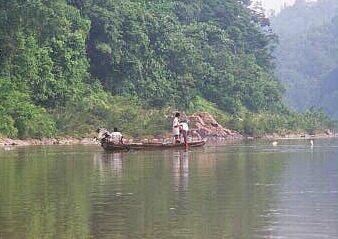
Photo by T Sinclair

Photo by T Sinclair
Around 10,000 years ago the aboriginal Malays-the Orang Asli-began to
move down the Malay peninsula from a probably starting point in south-west
China. The "original people" number over 80,000 in various parts of Malaysia.
Although most have given up their nomadic or shifting-agriculture techniques
and some have been absorbed into modern Malaysian society, there are still
a number of Orang Asli settlements in the interior.They make use of the
materials in the rain forest for food, clothing, shelter and medicine.
The ones that live in the rain forest of Taman Negara are of the Batek
tribe. They are of the Semang group and are thought to be the oldest inhabitants
of the Malay peninsula and are the smallest group of Orang Asli, numbering
about 3000. Traditionally nomadic hunters, theBatek use blow guns made
from the rattan tree to capture their game. They also fish on the
river using cast nets and leaving fish traps. Others work either as laborers
or selling jungle produce in markets. While some are Muslim,
most have resisted conversion and have retained their animist religion.
Although the Orang Asli are "sons of the soil", that is, native Malay
and therefore eligible for certain government preferences, they are still
economically among the poorest of the people in Malaysia. They are able
to hunt in Taman Negara, the only group to do so legally. Since 1991 when
the park accommodations were privatized and facilities upgraded, the number
of visitors has doubled to 48,000 per year.Where once large animals came
right up to park headquarters, sightings are now rare and it is necessary
for the Orang Asli to go farther into the interior for their hunting.
In other parts of Malaysia the Orang Asli have integrated into modern Malaysian
society, speaking Malay and living in permanent villages.
More on Orang Asli
Malaysian Indigenous People Declaration
Penan of Borneo Rainforest Case Study